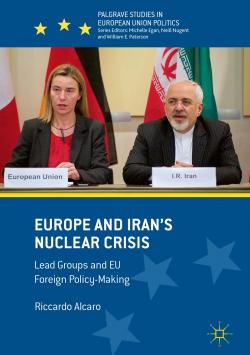Europe and Iran's Nuclear Crisis. Lead Groups and EU Foreign Policy-Making

This book investigates the European involvement in managing the nuclear dispute with Iran, shedding new light on EU foreign policy-making. The author focuses on the peculiar format through which the EU managed Iran’s nuclear issue: a ‘lead group’ consisting of France, Germany and the UK and the High Representative for EU foreign policy (E3/EU). The experience of the E3/EU lends credibility to the claim that lead groups give EU foreign policy direction and substance. The E3/EU set up a negotiating framework that worked as a de-escalating tool, a catalyst for Security Council unity and a forum for crisis management. They inflicted pain on Iran by adopting a comprehensive sanctions regime, but did so only having secured US commitment to a diplomatic solution. Once the deal was reached, they defended it vigorously. The E3/EU may have been supporting actors, but their achievements were real.
-
Details
Cham, Springer-Palgrave Macmillan, 2018, xi, 293 p. (Palgrave studies in European Union politics) -
ISBN/ISSN/DOI:
978-3-319-74297-7; 978-3-319-74298-4 (ebk); 10.1007/978-3-319-74298-4
Acknoledgements
Abbreviations
List of figures
1. Introduction: The E3/EU Iran Group
Part I. Theory and History
2. The Theory: Lead Groups and EU Foreign Policy-Making
3. The History: The 2003–16 Iran Nuclear Crisis
Part II. The Creation and Endurance of the E3/EU
4. The Bargain: How the E3/EU Came About
5. The Discourse: Why the E3/EU Endured
Part III. The E3/EU in Action
6. The Premise: The Underneath Continuity in the E3/EU’s Iran Policy
7. The Action/1: E3 Leadership and EU Ownership
8. The Action/2: The E3/EU and the United States
9. The Outcome: The E3/EU as Identity Shapers
10. Conclusion: The E3/EU and EU Foreign Policy
Appendix: Timeline of Iran’s Nuclear Crisis 2002–16
Bibliography
Index


